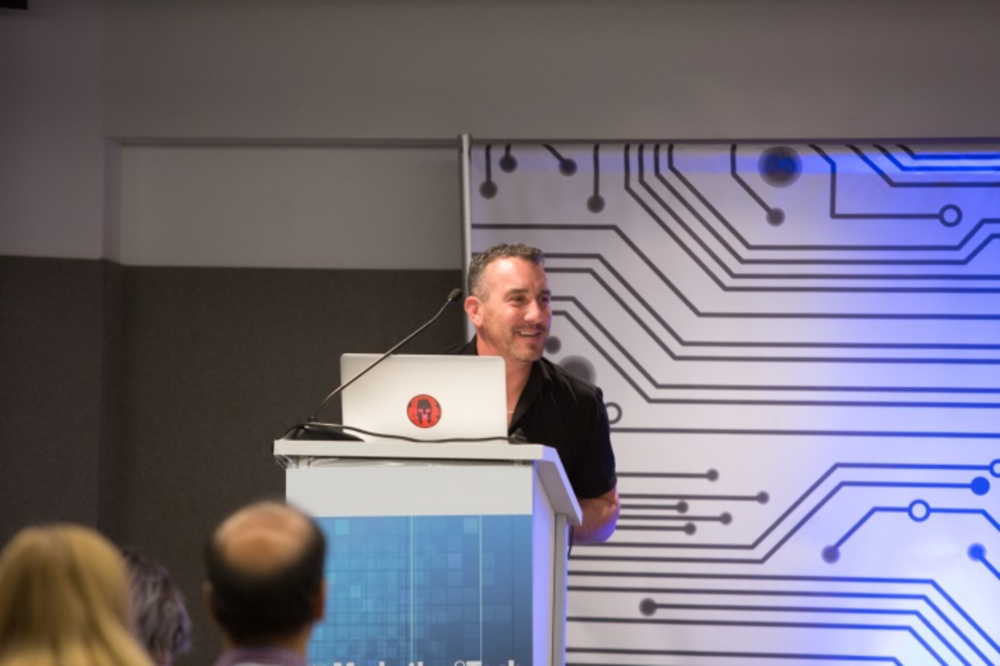Today moving money is about much more than simply transferring funds. “Western Union doesn’t send telegrams anymore. We move money across borders,” Michael Fenech, the financial services company’s head of global social strategy, said during his presentation at DMN‘s 2016 Marketing&Tech Innovation Summit in New York. “And people who send money connect those transfers with what they care about.”
Fenech said that marketers at Western Union consider the innumerable stories, cultures, personal connections, and opportunities behind each transfer when crafting its marketing campaigns. It’s tapping into those individual stories that allows the company to build trust, affinity, and loyalty with customers across the globe, in more than 120 currencies, via more than 500,000 agent locations, and with more than 100,000 ATMs across more than 200 countries.
With such a vast footprint, Fenech noted, part of activating Western Union’s marketing strategy—particularly through content and on social—means creating a sense of community for the company’s current and potential customers. “Food, family, and culture unite us all,” he said. “But we realized it’s experienced differently in each country—or perhaps from city to city.”
That’s why marketers at Western Union put several social initiatives in motion to connect with customers on a personal level. “We’re deeply engaged in culture,” Fenech said. “And rather than target a segment, we created a community.”
Perhaps surprising for a financial services company, that community is based on content focused on food. Western Union launched WU Home Cooked, a fun microsite that captures the strong longing for home and the pleasant memories of native food. Fueled by hashtag #WUHomeCooked, the site features a social media collective of recipes and pictures of customers’ favorite dishes from their native countries. It shares customers’ personal stories and their families’ warm wishes through touching videos, and enables Western Union to create a deeper, more personal connection with customers. Participants have so far entered more than 7,000 stories on the microsite. For the customers who interact there, it’s a digital home away from home.
Making connections that create engagement
Personal motivations and goals move customers to use Western Union’s services, Fenech said. In fact, he said that more than 30% of the money that’s sent through WU is for education. Other major reasons include money for medical bills and familial support. Fenech said that for the company to connect with those customers, it’s important for its marketers to recognize these wants and needs and then include them in the company’s messaging. “Western Union’s customers [so often] have a dual belonging,” Fenech said. “[Our customers are] the senders and the receivers. Their hearts are in one place, and they’re living in another.”
Fenech said using content and social media has enabled the marketing team at Western Union to get customers to “feel, think and the act on” the financial company’s products and services. He added having a plan means creating a year-round content calendar, which for WU includes more than 130 cultural holidays that the marketing team selects from to feature in campaigns. It’s a global content strategy that Fenech said taps into techniques that successfully activate customers and work well on social; these include cinematography, original imagery, and provocative messaging.
“Doing this has given us great engagement, especially compared to other financial service companies,” Fenech said. “Typical engagement rates at finance companies are less than 1%; Western Union is about 30% [on social media]. We get our customers; we know what they care about.”
On a final note, Fenech said that every company should have relevant messaging and content at the center of their social marketing strategies. Western Union, he pointed out, continually listens, rather than solely broadcasting, to build meaningful engagement. “Month by month, content and your strategy should be changing, evolving, and experimenting,” he said. “It should never stay the same. Your customers will tell you what they want. Follow the insight to where they lead.”








